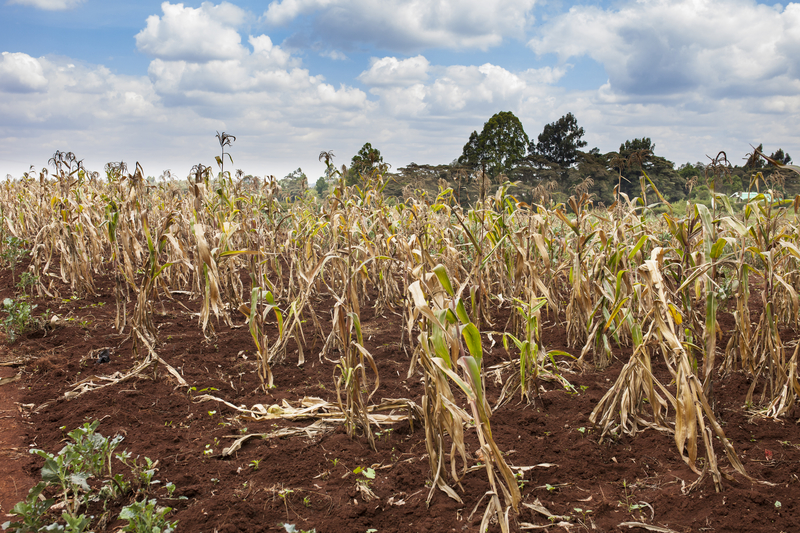If you're a prepper, the best way to handle a potential famine is to create your own sustainable food source. However, we can't all successfully employ this method due to our location and resources. Instead, we can learn from our ancestors about famine survival.
During the Norway Famine
Bark Bread – is a bread made by adding inner bark (carries organic nutrients) to the flour as an extender to make it last longer, bake more breads and still keep them nutritious. In fact bark meal contains more zinc, magnesium and iron then is found in rye and wheat and it is full of fiber.
The bark component was usually made from trees like elm, ash, aspen, rowan, birch, pine and moss.
The inner bark is the only part of a tree trunk that is actually edible, the remaining bark and wood is made up of cellulose which no man can digest. The dried and ground inner bark was added: about 1/3rd “bark flour” to the remaining grain flour.
During the Famines of Russia
Nettle and orache were used to make breads or soups (But you can also make polenta, pesto and purée). Chamiso and Shadscale (two species of orache) were also commonly eaten by Native Americans. Both rich in Vitamin E (much needed in a food crisis).
Nettle has a flavor similar to spinach (prepared in exactly the same way) when cooked and is rich in vitamins A, C, iron, potassium, manganese, and calcium. Soaking stinging nettles in water or cooking will remove the stinging chemicals from the plant.
Some breads were made out of orache and bran at the Siege of Leningrad, using machine oil – the only oil still available.
In France, Germany and Belgium During the Famine of WWI and WWII
Rutabagas were widely used as a food of last resort in Europe during the famine of World War I and World War II. The roots are prepared for human food in a variety of ways, and the leaves can be eaten as a leaf vegetable.
During the Irish Famine
The Irish in the countryside began to live off:
– Wild blackberries
– Ate Nettles
– Turnips
– Several species of edible kelp, including dulse and Irish moss
– Old cabbage leaves
– Edible seaweed
– Fungi
– Shellfish
– Roots
– Frogs
– Roadside weeds
– and even green grass
Finally, Government-sponsored soup kitchens were established throughout the countryside and began dispensing a nutritious food called Stirabout.
‘Stirabout,’ is a substantial porridge made from two-thirds Indian corn meal and one-third rice, cooked with water. By the summer, three million Irish were being kept alive on a pound of stirabout and a four-ounce slice of bread each day.
During the Mormon Famine in Western United States
Sego lily bulbs were eaten by the Mormon pioneers when their food crops failed. The bulbs of the flower were roasted, boiled or made into porridge.
During the Dutch Famine
The tulip bulbs were nutritious and relatively easy to cook.
Here’s an account about how they prepared the bulbs (of one of the survivors – Father Leo):
“The skin of the bulb is removed, pretty much like an onion, and so is the center, because that is poisonous. Then it is dried and baked in the oven. My mother or older sisters would grind the bulbs to a meal-like consistency. Then they would mix the meal with water and salt, shape it like a meatloaf, and bake it. I can still remember the taste of it: like wet sawdust…We still shared tulip bulbs and sugar beets with those with hand-drawn carts who continued to go from door to door. I think seeing my mother still give to the hungry at this time, even though we had very little, made me want to be a missionary.” (Source)
They also boiled and ate Sugar beets. These are high in fiber, manganese, and is a decent source of vitamin C, potassium and magnesium.
During most famines
Grass pea is a particularly important crop in areas that are prone to drought and famine, and is thought of as an ‘insurance crop’ as it produces reliable yields when all other crops fail.
Well that’s something people eat when there’s nothing else to eat, because eating grass pea may cause a disease that basically paralyzes the lower limbs. The disease occurs only when the seeds are consumed as a primary protein source for a prolonged period but safe to eat for days maybe weeks.
Do you have any ideas for alternative food sources during a famine? Let us know in the comments below!
Article Source: Ask A Prepper

Mine were fat anyway. They just held out.
Actually, I starved to death during the last famine. But being dead is boring, so I read articles on Facebook
By walking where there wasn’t famine…